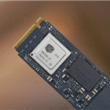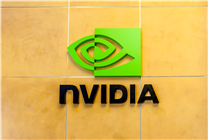Surge in Memory Prices: Samsung’s 60% Increase and Its Ripple Effect on the DIY Industry
- Samsung raises DDR5 memory prices by 60%, impacting the entire tech industry.
- Board manufacturers halt shipments and new product developments due to the soaring costs.
- Consumer electronics and gaming devices are expected to reflect these price hikes soon.
The technology landscape is experiencing significant upheaval following Samsung’s announcement of a staggering 60% increase in the pricing of DDR5 memory. This dramatic escalation is not just a standalone event; it is triggering a butterfly effect that threatens to disrupt the entire DIY (Do-It-Yourself) ecosystem.
Rising Prices Across the Board
In November, industry sources revealed that Samsung’s pricing for a 32GB DDR5 memory module, which was quoted at $149 in September, surged to $240 by mid-November. Other memory variants like the 16GB and 128GB modules have also seen price increases, now standing at $136 and $1,195, respectively. Moreover, even 64GB and 96GB modules have increased by more than 30%. As the demand for memory continues to climb—with devices such as laptops, game consoles, tablets, and smartphones requiring a minimum of 16GB—these soaring prices are becoming unsustainable.
The ramifications are already evident within the industry. Board and card manufacturers, wary of how these price hikes will affect consumer demand and ultimately motherboard sales, are responding by suspending shipments. Many have even put a halt on the development of new products. The fear is palpable; if motherboard inventory goes unsold due to inflated prices, each unsold unit could become a financial drain.
Consumer Impact: A Shift in Purchasing Power
Supply chain insiders caution that as memory prices escalate, consumer willingness to purchase new products will likely diminish. Higher costs invariably lead to increased retail prices for end products, such as computers and servers, which will now reflect these memory price surges. The effect of this increase is not just a short-term blip; consumers can expect to see these price changes reverberating across the electronics market throughout the coming year.
The broader implications for the DIY community are stark. With rising costs inhibiting the affordability of essential components, DIY enthusiasts and casual consumers alike may opt for older models or delay upgrades altogether. This shift could slow down the momentum of new technology adoption and innovation, stalling what has generally been a vibrant and fast-paced sector.
NVIDIA and Future Developments
A significant consequence of these soaring memory prices extends to other tech giants as well. Reports suggest that NVIDIA has paused the production and sale of its upcoming RTX 50 Super series graphics cards, originally slated for early next year. The core issue? An expected dramatic increase in video memory capacity, which is now hampered by the steep increase in memory costs. This not only disrupts NVIDIA’s plans but also raises questions about the immediate future of high-performance computing products.
Conclusion: Navigating the Storm
In summary, the landscape of technology is shifting dramatically due to Samsung’s pricing strategy and its cascading effects throughout the supply chain. The impact on manufacturers and consumers alike is profound, forcing companies to reconsider their product strategies and consumers to rethink their purchasing behaviors.
As the market grapples with these changes, stakeholders will need to stay informed and adaptable. For now, the reality is clear: the journey ahead for the DIY industry and consumer electronics is fraught with challenges, and only those who can effectively navigate this complexity will emerge successful.
In this environment, awareness and rapid response will be more crucial than ever for both manufacturers and consumers who hope to make informed decisions in an era of rising costs.







